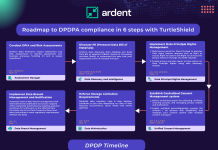America’s Cyber Defense Agency has actually alerted that state-sponsored hackers connected to individuals’s Republic of China are targeting crucial networks worldwide, consisting of telecoms, federal government, transport, accommodations, and even military facilities, by making use of significant foundation routers and leveraging jeopardized gadgets to keep long-lasting gain access to.
This activity overlaps with projects tracked in the cybersecurity market under names such as Salt Typhoon, Operator Panda, RedMike, UNC5807, and GhostEmperor. The authoring firms note they are not embracing any one industrial calling convention and rather refer to those accountable more broadly as Advanced Persistent Threat (APT) stars. According to the advisory, this cluster of harmful activity has actually been observed throughout the United States, Australia, Canada, New Zealand, the United Kingdom, and other areas worldwide.
Furthermore, the UK and global allies on Wednesday(27 August) openly connected 3 China-based innovation business to a worldwide cyber project focused on important networks. The called entities are Sichuan Juxinhe Network Technology Co Ltd, Beijing Huanyu Tianqiong Information Technology Co, and Sichuan Zhixin Ruijie Network Technology Co Ltd.
In a brand-new advisory, the National Cyber Security Centre (NCSC), part of GCHQ, and partners from 12 other countries shared technical information demonstrating how harmful activity connected to these companies has actually targeted nationally considerable organisations throughout the world.
Because a minimum of 2021, the project has actually struck important sectors throughout several nations, with a cluster of activity observed in the UK. The operations overlap with projects the cybersecurity market tracks under the name Salt Typhoon. According to the advisory, the information taken through these invasions might offer Chinese intelligence services the capability to keep track of interactions and motions of targets on an international scale.
What is Salt Typhoon?
Salt Typhoon is the name utilized by cybersecurity scientists to track a state-sponsored sophisticated relentless risk (APT) group connected to China, understood for carrying out long-running espionage projects.
Active because a minimum of 2021, the group has actually targeted vital sectors worldwide, consisting of federal government, telecoms, transport, accommodations, and military facilities, by making use of unpatched network gadgets like foundation and edge routers. Security companies caution that Salt Typhoon’s operations make it possible for Chinese intelligence services to take delicate information, preserve hidden long-lasting gain access to, and possibly track international interactions and motions.
How are the APTs making use of and breaching business?
The APT stars make use of facilities such as virtual personal servers (VPSs) and jeopardized intermediate routers that are not connected to openly recognized botnets or obfuscation networks to target telecoms and network provider, consisting of ISPs. They might jeopardize edge gadgets no matter ownership, utilizing these as paths to reach core targets of interest. By leveraging jeopardized gadgets, relied on connections, or personal affiliations, such as provider-to-provider or provider-to-customer links, the stars pivot into other networks.
Sometimes, they customize routing, allow traffic matching through SPAN/RSPAN/ERSPAN, and set up GRE/IPsec tunnels and fixed paths to keep gain access to. These stars often make use of great deals of susceptible, Internet-exposed gadgets throughout several IP addresses and might review systems for follow-on operations.
Preliminary gain access to vectors stay a crucial details space, and companies motivate companies to share compromise information with proper authorities to enhance understanding and action efforts.
To keep relentless access to target networks, the APT stars utilize a range of methods. A number of these methods can obfuscate the stars’ source IP addresses in system logs, making their actions look like if they stem from regional IP addresses. Following preliminary gain access to, the stars concentrate on procedures and facilities associated with authentication, such as Terminal Access Controller Access Control System Plus (TACACS+), to make it possible for lateral motion throughout network gadgets. They typically accomplish this through SNMP enumeration and SSH, and from these gadgets, they passively gather package captures (PCAP) from particular ISP client networks.
To even more support discovery and lateral motion within networks, the APT stars might target authentication procedures consisting of TACACS+ and Remote Authentication Dial-In User Service (RADIUS), Managed Information Bases (MIBs), router user interfaces, Resource Reservation Protocol (RSVP) sessions, Border Gateway Protocol (BGP) paths, set up software application, and setup files. These actions permit them to map network geography, determine vital possessions, and keep relentless gain access to while staying challenging to discover.
How to remain safe?
Keep systems upgraded — Regularly spot routers, servers, and software application to close recognized vulnerabilities that aggressors make use of.
Display network traffic — Use invasion detection systems (IDS) and security tracking tools to determine uncommon activity or unapproved gain access to.
Section networks — Limit lateral motion by separating vital facilities from basic networks.
Strong authentication — Implement multi-factor authentication (MFA) for administrative and remote gain access to accounts.
Limitation edge gadget direct exposure — Secure client edge (CE) and supplier edge (PE) gadgets, consisting of routers and switches, to avoid exploitation.
Audit and evaluation logs — Regularly evaluation system and network logs to identify abnormalities or suspicious activities.
Encrypt interactions — Use VPNs, IPsec tunnels, or other file encryption techniques to secure information in transit.
Supplier and supply chain security — Evaluate security practices of third-party service providers to avoid assailants from rotating through relied on connections.
Occurrence reaction strategy — Have a clear strategy to react to breaches, consisting of informing authorities and separating jeopardized systems.
Share hazard intelligence — Collaborate with nationwide cybersecurity centers or market groups to remain notified about emerging dangers.




